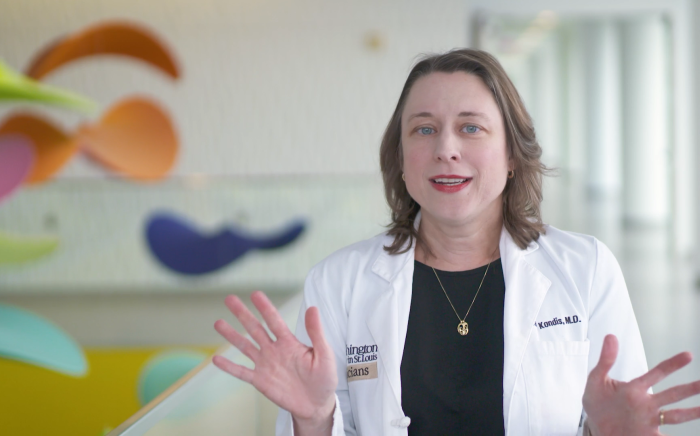After a doctor orders a swallow study for a child, the study is completed in two parts, a clinical evaluation of feeding and a videofluoroscopic swallow study.
Clinical evaluation of feeding
The clinical evaluation of feeding (also called a bedside evaluation) is done prior to any imaging study. This portion of the evaluation is done in the Department of Therapy Services. Depending on a child’s individualized needs, this portion may be performed with a Speech Pathologist and an Occupational Therapist or just with the Speech Pathologist.
Videofluoroscopic swallow study
- After the clinical evaluation of feeding, the child will go to the Joe Buck Imaging Center (Radiology) at St. Louis Children’s Hospital for the videofluoroscopic swallow study (sometimes called a modified barium swallow or rehab swallow). The swallow study is a procedure used to see how a child is swallowing. This test is helpful if a child is experiencing difficulty with feeding and/or swallowing. It is performed by a speech-language pathologist and a radiologist. Special equipment is used to provide a “moving x-ray” of a child’s swallow.
- The child will sit in a special chair next to the x-ray equipment. The x-ray will look like an x-ray of the child in profile. The speech pathologist will feed the child a variety of foods (depending on what he or she is currently able to eat by mouth) mixed with barium. The barium makes the food show up on the x-ray.
- The speech pathologist watches the x-ray closely to see how the food and drink move through the mouth, throat, and esophagus during chewing and swallowing. The speech pathologist also watches for any signs of aspiration (when the food or liquid goes “down the wrong way” into the airway).
- After the study is complete, the speech-language pathologist will make recommendations about a child’s feeding and swallowing.
Treatment
Depending on what is observed in the clinical examination or on the videofluoroscopic study of swallow, the speech-language pathologist may recommend specific treatment techniques. Some of these can be done at home or with the child’s therapist in the community. Some would require follow-up and on-going treatment at St. Louis Children’s Hospital. The therapist will work with families to decide the right ongoing care for the child.












